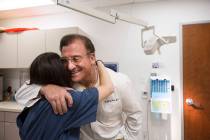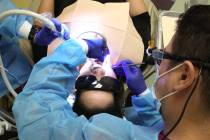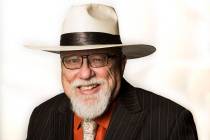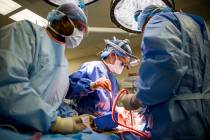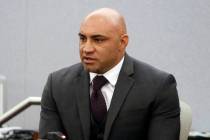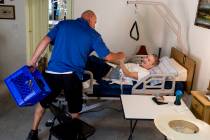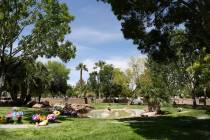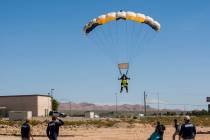Shriners need new blood to keep going
Smiling, 17-year-old Samantha McClean walks down the stairs of her Henderson home with examples of her artwork under her arm. As she hurriedly makes her way to the living room, there is nothing about her entrance that suggests anything more or less than normalcy.
A tad shy, her eyes dance away for a moment as we greet each other. She places her paintings on the couch and talks about how Disney movies were an inspiration for one piece.
The Coronado High School senior, whose light-colored dress is set off by black tights and flats, loves art but isn’t sure at this point whether she’ll go on to a design school after graduation.
What she’s not unsure about, however, are Shriners, men who have dedicated their organization — Shriners International — to helping disabled children help themselves. They want to see physically disadvantaged youngsters become as whole as they can be.
Nothing is more noble.
“I am forever in my debt to them,” she says. “They’ve made it possible for me to walk so nobody can even notice I was born without a fibula in my leg. Unless you know I’m wearing a prosthesis, you just can’t tell. They’ve never charged my parents for all the work over the years they’ve done with me as I outgrow a prosthesis. I pray that they’ll always be around.”
All of us should. It is by no means a sure thing that the network of Shriners Hospitals will last forever.
The Great Recession took its toll on the hospital chain that has offered free orthopedic care, burn treatment, cleft lip and palate treatment, and spinal cord injury rehabilitation treatment to about 1 million patients and their families since 1922.
Five years ago, the Shriners $8 billion endowment for its hospitals became $5 billion. There was talk some of the 22 hospitals nationwide would close.
Two years ago, in an effort to stop the hemorrhaging, the Shriners started billing patients’ insurance companies — what insurance doesn’t cover they pick up — while still offering free care to those that didn’t have insurance. That step, coupled with renewed fundraising efforts that include the Shriners Hospital for Children Open in Las Vegas — the PGA golf tournament at TPC Summerlin is Oct. 14-20 — has left the organization in far better financial shape.
But another critical problem still exists. Many Shriners are dying off. Joe Alvarado, head of the local temple’s membership committee and himself 76, stresses many in the organization are in their 70s. For instance, Shriner John Pennington, 75, still volunteers his time to drive Nevada patients and families to Shriners Hospitals in California.
“We’re getting some new blood but we still worry about that,” he said.
There’s real cause for concern. In a book I wrote in 1993, “Standing Tall,” which told of the challenges of a boy with cerebral palsy, I noted that membership in the Shrine, which had helped the youngster, had fallen from nearly a million members in the 1970s to less than 700,000 in the 1990s. And it has continued to fall.
One example of the new blood in the pipeline is Samantha’s father, 44-year-old Daniel McClean, an electronics technician with JT3, a company that provides technical support to the Nevada Test and Training Range at Nellis Air Force Base.
“I want to give back,” he says. “Shriners would never tell me that I have to, but I want to. I would have been buried under medical bills for the surgeries and prostheses without them. Samantha is just like any other girl now.”
McClean became a Mason in January — you must become a Mason before becoming a Shriner — and expects to qualify to become a Shriner soon. The fraternity of Freemasonry, of which the Shriners are a big part, is the most widely known fraternity in the world.
Entertainers from singer Brad Paisley and actor Richard Tyson to the late John Wayne and Count Basie have proudly worn their Shrine red fezzes as they raised money to help children. Ditto for astronaut Buzz Aldrin, golfer Arnold Palmer, President Franklin D. Roosevelt and U.S. Supreme Court Justice Thurgood Marshall.
McClean believes many Americans are tired of the “me” attitude that has characterized the nation for decades and that they now want to be part of an organization that helps others regardless of race or religion.
Samantha McClean hopes so.
“There are so many kids that need help whose families don’t have the money,” she said.
(To see if Shriners Hospitals for Children can help your child, call 702-382-5554.)
Paul Harasim is the medical writer for the Las Vegas Review-Journal. His column appears Mondays. Harasim can be reached at pharasim@reviewjournal.com or 702-387-2908.








